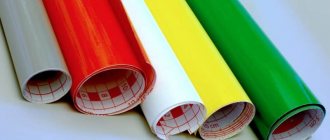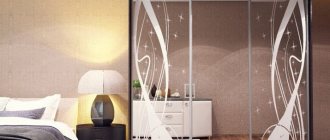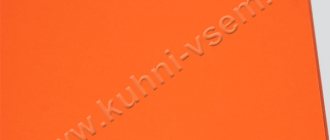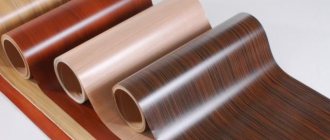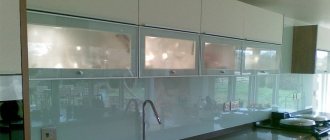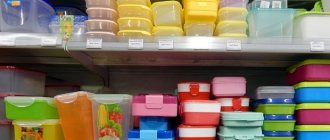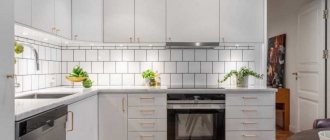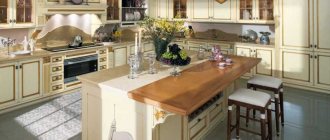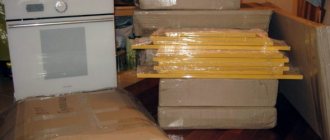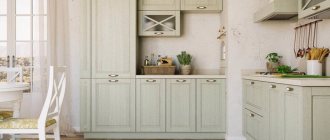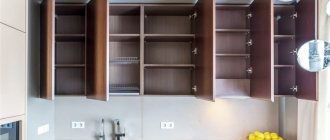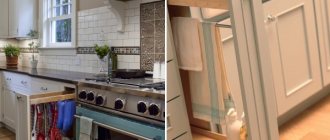High-quality kitchen furniture is not cheap, and besides, owners tend to get used to a comfortable set, so even when the facades lose their former appearance, many refuse to replace the cabinets. But numerous visual defects that inevitably appear over years of intensive use make thrifty kitchen owners wonder: is it possible to replace PVC film on MDF facades? In their opinion, if we are not talking about a complete replacement of furniture or at least changing the facades, it will be possible to refresh the set with “little expense.” Some try to act independently and cover the facades over the existing PVC coating with self-adhesive film, which, of course, cannot be a full-fledged finish - both visually and in terms of quality. Yes, this helps to save money, but such steps are only advisable if these are temporary measures and you need to somehow hold out for real repairs.
On online forums you can also find numerous questions about the possibility of replacing the coating of MDF film facades, which at home looks different than under store lighting and is not liked by the owners. So, let's figure it out.
Benefits of façade renovation
Self-adhesive film was used to restore the facades. There are times when it begins to come off: if the MDF film has peeled off in the kitchen, you should not rush to replace it with a new one. The film often peels off due to humidity, temperature changes, steam, and the use of low-quality glue.
You should not be surprised if peeling occurs quite quickly, even during loading after manufacture or when the product has a short lifespan. The film peels off from MDF facades for the following reasons:
- The glue is not applied to the entire surface. When the substance is applied manually, the worker often misses sections of the product and the film does not stick to them. You can solve the problem by using colored glue.
- Using a cheap, poor quality substance. Quite often a two-component polyurethane composition is used. It is quite difficult to mix it in the correct proportion, so the glue hardens incorrectly and does not hold well, and bubbles may appear on the film.
- Using expired glue. When using such a material, the film will stick, but will peel off fairly quickly.
- Insufficient temperature during gluing, as a result of which the connection did not go well enough. There can be many reasons: poorly heated film, the vacuum was applied too early, the adhesive layer was thin, the workpieces for the facades were cold, it could have been cold in the workroom, the film was not pressed well enough, due to a weak vacuum supply, the wrong adhesive was chosen, the composition of which does not come into contact with a specific film. The facades themselves could also be used incorrectly: for example, they were located next to heating appliances, a stove, or sources of moisture. Before purchasing, it is important to find out how to properly care for furniture and for what conditions it was made.
How to care for new facades
In order for a renovated kitchen to retain its attractiveness for a long time, you need to provide the facades with proper (depending on the material) care:
- Facades made of chipboard and MDF do not leave greasy stains on the surface, and therefore regular wet cleaning will be sufficient;
- Solid wood structures should be protected from direct sun and cleaned with a soft cloth and chlorine-free products;
- For glass, liquids are used that do not leave streaks after washing, but abrasive powders, scrapers or brushes are not used;
- Stains on laminated and varnished doors can be removed with suede or any other dry soft cloth.
And for any kitchen facades, the use of aggressive acids or alkalis for cleaning is not recommended.
How to fix the problem?
If the film on the facade of the MDF kitchen has peeled off , you need to carefully spread it with glue from the edge and press it down. There is a chance that the film will take the desired shape. Another way to restore the coating is to use an adhesive membrane. To do this, you will need to lay the boards on a dry and flat surface, for example, on a table, cover them with a membrane, and use a vacuum. The membrane should tightly cover the facades. If you want greater reliability, you need to use high-quality glue and heat the material so that it can be activated. Warming up should be done evenly. This method is suitable only for unmilled facades: if the surface is uneven, the membrane will not stick and will quickly peel off. Therefore, it is so important to correctly restore kitchen facades while observing certain conditions.
Restoration of facades with decorative film
The appearance of the kitchen largely depends on the cladding of the facades. If your kitchen has smooth doors without a relief made of chipboard, then they can be easily covered with vinyl film.
Updating kitchen MDF facades with convexes will be easier if you use an industrial hair dryer. Only a well-heated film can take the desired shape. If there are decorative details on the facades, they must be removed before pasting.
Replacement of the old film is carried out only after removing the previous layer. Remember that decorative film is only applied to prepared surfaces.
It should be taken into account that in production, MDF film facades pass through a special press, which makes it possible to obtain a smooth surface without flaws. At home, MDF can only be covered with self-adhesive.
Using heating devices
If the PVC film peels off from MDF kitchen facades, you can try replacing it with a new film or gluing the old material in place using available electrical appliances. This could be an iron, a powerful home or construction hair dryer. The film needs to be carefully warmed up: it should become quite soft and blurry, but not start to melt. If you have something to try, use these pieces or on an inconspicuous place on the façade. The device is pressed against the edge that is not glued for a few seconds. The film should stretch, the glue should warm up at this moment, and the material should protrude towards the back side of the facade and adhere firmly. If this can be done, then it will be possible to glue the entire facade in this way, in places where the film has retreated.
Advice: the film itself cannot be heated with a hairdryer at close range, as this will curl it and be damaged.
This DIY restoration of kitchen facades requires some skill, but is quite simple to perform and does not require the use of expensive tools or materials. If the inside and corners are poorly glued, you can use a metal rod comparable in size to the frame. First you need to warm it up. For this, you can use, for example, a gas burner.
Restoring coating using friction
Restoring kitchen facades from MDF using this method does not require any available tools at all. In order to glue the separated section of the film, you need to cover it with a rag and start rubbing it with your fingers, pressing the film. If there is adhesive underneath, the temperature from friction in a small area will be enough to activate a chemical reaction and cause the film to stick.
Advice: this method should be used carefully, as there is a high risk of damaging the film, exposing its edge or removing the top layer, which will ruin the appearance of the coating.
Application of glue
Restoring a glossy kitchen can cause some difficulties, since gloss does not tolerate strong physical impact, which is why it should not be roughly rubbed with your fingers or heated closely with any appliances. You can try a safer method - gluing the separated film using “Moment”. Most often, such a film peels off in the kitchen, since it is not affected by hot steam. It is necessary to restore the coating as quickly as possible, otherwise the furniture itself will be damaged. The glue must be applied to the untreated area of the facade and to the film itself along the edge so that it can isolate the seam from negative influences. All this must be done carefully, as the glue easily sticks and gets dirty.
Conclusion: inexpensive do-it-yourself kitchen restoration is quite accessible; it is advisable to look at photos of the finished results in advance. With a careful and competent approach, you can easily restore the appearance of the kitchen without resorting to replacing parts and without spending money and completely replace the facades.
Source: obzorkuhni.ru
Repair of wooden surfaces
Monolithic elements of furniture sets made from solid natural wood are restored by re-painting the facades.
For the kitchen it is better to choose enamel rather than paint. The first has a higher degree of abrasion resistance and fades less.
Acrylic enamels are water-based. Having chosen to paint kitchen wooden facades with this material, it is recommended to apply a protective layer of transparent varnish on top. Alkyd enamels do not need such protection.
Painting kitchen facades is a popular method because it does not require much expense and takes little time. Most often, a different color is simply applied on top of the old, washed and degreased layer.
In case of major damage (deep scratches, holes, traces of fire), it is necessary to prepare the natural wood surface. Old paint is removed using chemicals (removers) or heating with a hairdryer. After this, the wood is cleaned with fine emery cloth. Deep damage must be filled with a special putty for wood. To ensure that the composition holds better, cracks and crevices are cleaned of dust and debris.
The putty is applied using a plastic spatula, pressing it in so that it fills the entire space. Otherwise, it will sag and depressions will appear.
The next step in restoring the coating is applying a primer. It will create better adhesion of the base to the paint, play the role of a protective layer, and extend the service life of the product.
The last stage is coloring. It is done with a paint roller or brushes of different widths. Narrow ones are used to process thin relief parts (they are painted first), wide ones are used for panels and other planes. For best results, it is recommended to apply several layers of paint.
How to correctly change facades in the kitchen - choice of material, color, and their installation
The kitchen is the face of the house, so it should be decorated in the same style and be clean and tidy. Over time, it is necessary to replace kitchen facades, since under the influence of external factors (water, grease, steam), the appearance of the set may lose its visual appeal. A preliminary inspection of the furniture frame is required.
If it is in good condition and does not require replacement, you can replace the facades with new options. The whole process consists of several stages:
- Material selection;
- Carrying out work;
- Aftercare for new furniture.
Replacing kitchen facades is an excellent solution for practical owners
- How to choose the right material for new facades
- Does the color of the old kitchen frame not match the new facades?
- Stages of work
- How to care for new facades
Are you tired of your old kitchen set or want some changes in the most important room in the house? Or maybe the furniture has long been worn out by steam, grease and water and has lost all its attractiveness? Then conduct a thorough inspection of the furniture - if the furniture bodies are still capable of performing their functions and do not require restoration/replacement, then it is quite possible to change only the facades - this is a practical and economical solution in most cases.
Buying new furniture always involves significant financial costs. But replacing the kitchen facades will allow you to decorate the room in a new way and at the same time remains a budget solution. In addition, you may not maintain the same stylistic design, but replace, for example, smooth glossy doors with classic facades with moldings or milling. This will make your kitchen design fresh and relevant again.
Material selection
Changing the facades in the kitchen is quite simple; today, construction and specialized stores offer various types of materials, which gives you the opportunity to choose. There are several options that have their own advantages and differ in cost.
If we take a product made from chipboard as an example, the main advantage here is the cost. This material is considered the most budget-friendly, but also quite capricious. However, chipboard is a resistant material to external influences and can last up to ten years. The main thing when choosing is to pay attention to product certificates.
Kitchen facades made of MDF also have a fairly long service life, approximately seven years. This is an artificial material, the cost of which is lower than natural wood. The kitchen facades are made of exactly this material and decorate the furniture. It can be matched with photo printing or other effects that decorate the exterior design of the room.
The glossy surface looks great. The advantage of the material is its reliability, it fastens well and is resistant to influences: temperature changes, room humidity, and mechanical damage. It is easy to care for, the surface does not accumulate bacteria.
Glass kitchen facades look quite original. Classic versions of the set are often decorated with original glass, while choosing a thematic design or an abstract pattern.
And classic and modern Scandinavian-style kitchens are decorated with transparent or semi-opaque glass. It can be of different colors, smooth or corrugated. A distinctive feature of this façade is its incredible resistance to dirt and chemicals.
Glass requires safe handling, so for apartments where small children live it is better to choose an alternative option - plexiglass. It weighs little and has a high level of resistance to mechanical stress.
You can be proud of solid wood facades; they look noble and stylish. For a budget option, you can choose an alternative option - this is a veneered structure, which in terms of external characteristics differs little from solid wood.
Source: kuhnier.ru
Which film should I choose?
First of all, you need to look at the thickness of the material and the manufacturer. German “self-adhesive” tapes are of good quality; their price depends on the thickness.
Dutch and Italian manufacturers have proven themselves to be excellent. You can choose something from budget series or take a closer look at exclusive products, but then the price will be quite high.
The most inexpensive are Chinese adhesive decorative materials from unknown manufacturers. However, low price should not be the main selection criterion, otherwise a beautiful kitchen decorated with self-adhesive vinyl film can quickly lose its appearance.
Not all adhesive materials intended for promotional products can be used in the interior. Some of them are designed for short-term use. Choose high-quality decor, and then the restoration will be durable, and a simple kitchen cabinet will become an interior decoration.
The color can be any. If you want to take a creative approach to kitchen design, place photos of fruits, vegetables or flowers on the facades, thereby decorating ordinary old furniture. The drawing can also be applied using photo printing.
How to change the facades on a kitchen set with your own hands?
The kitchen is not only the housewife’s workroom, but also a gathering place for the whole family. Therefore, this room should not only be comfortable and functional, but also bring beauty, coziness and comfort to others. The main detail of the furniture is its facade, which catches the eye first, therefore, its appearance must be at the highest level.
Replacing the kitchen façade is an affordable way to change the interior
Replacement of furniture facades can be done for several reasons. This could be a kitchen renovation with a change in interior design, wear and tear of materials, or the usual desire to refresh the decor in the apartment. Updating kitchen facades can be done in several ways. In order to determine the appropriate method, you need to approach the assessment of each situation individually, based on many factors.
Do-it-yourself finishing of kitchen facades with rattan for a country-style kitchen
Stages of work
Most craftsmen recommend not to carry out work on replacing furniture facades with your own hands, but to involve specialists at all stages (from calculation to dismantling and installation). Although, if your kitchen is of standard size, in good working condition and does not have complex closers, then you can update the kitchen yourself.
The required dimensions of furniture fronts are calculated quite easily: to determine the height, 3 mm is subtracted from the height of the cabinet, and to determine the width, 4 mm is subtracted from the corresponding cabinet dimensions.
After this, work is carried out in the following sequence:
- Cabinet doors are milled for hinges;
- Handles are attached to them, for which preliminary markings are made in accordance with the selected fittings;
- The prepared parts are hung on the body - for this, a foot is attached to the walls, sold complete with hinges;
- The element hung on the foot is adjusted vertically and horizontally with special screws.
Choosing a design and restoration method
Option for transforming the kitchen after replacing the facades and apron in the kitchen
Replacing the entire kitchen unit is a very expensive undertaking, so restoring kitchen facades looks like a rational move, provided that the rest of the furniture is in good working order. There are three main options for replacing facades: covering with film, painting and replacing the facade slab.
Polyvinyl chloride film (PVC) is mainly used, which is the simplest way to restore furniture facades. The advantages of PVC film are an affordable price, ease of gluing and further operation, high resistance to changes in temperature and humidity (which is very important for a kitchen), a wide range of colors and patterns (the option of selecting a pattern for new facades for any kitchen design, from plain to imitation marble or wood).
One of the easiest ways to update a kitchen set is to stick film on the facades
The option of replacing kitchen facades is more expensive than film, but in this case the client receives a completely new set, with the exception of its frame (as practice shows, it practically does not wear out during normal use). The cost of such restoration depends on the type of material used. The following materials are most often used for this technology.
- Chipboard or fibreboard. Wood panels have a number of advantages, the main one being price. High-quality products made from these materials have good resistance to moisture and temperature changes. The plates can be covered with film, paint or enamel. The most expensive option is to cover it with a layer of wood, which creates the illusion of a wooden product while being affordable.
Due to the shine of laminated chipboard, the kitchen will visually appear larger
Solid wood facades are an expensive, but high-quality and durable option
Metal facades for kitchens in high-tech style
Replacing kitchen facades with modern plastic is an excellent solution; this wear-resistant material remains in its original form for a long time
Glass facades for the kitchen - a combination of external fragility with reliability
Kitchen facade made of artificial stone
Kitchen with MDF fronts covered with veneer
If the structure of the furniture material is in normal condition, and only the appearance needs to be changed, painting is an excellent option. Here everything is limited only by the imagination and financial capabilities of the master, since there are a lot of options with the type of paint and the possibilities of its application on the modern market.
Updating an old but strong wooden set by painting and replacing the countertop
To completely update the appearance of the facades, it is advisable to replace all furniture fittings, matching them to the updated style of the kitchen. With new handles and hinges the set will look much better.
A set with bright colors will look good in spacious rooms
Unlimited possibilities of self-adhesive film
Kitchens covered with film look impressive both in photos and in real life. Surfaces are updated using vinyl or other film. The range of this material is amazing in its diversity, and the price pleases with its affordable price.
Decorative “self-adhesive” imitates:
- natural wood of different species;
- natural stone;
- ceramics and tile texture;
- leather and fabric.
In the photo - imitation wood.
Its texture can resemble patterned silk, a colorful tapestry or cute chintz. The material is produced in matte and glossy versions. There are films with holographic and mirror patterns. And all this can be combined with each other, creating interesting effects, changing an ordinary kitchen cabinet beyond recognition, as in the photo below.
The price of the film depends on the manufacturer and the decorative surface.
Vinyl “self-adhesive” is quite practical because it:
- not afraid of moisture;
- does not fade in the sun;
- does not respond to temperature changes.
With its help, you can completely update the design of both the kitchen and the bathroom, transform the kitchen cabinet or the entire set.
Adhesive film is a good budget replacement for a full-fledged repair. Of course, you need certain knowledge and skills, but the video will help you quickly understand the intricacies of the process.
Price for renovation of kitchen facades
| Service | Unit | Price |
| Removing old material | 1 m2 | 450 rub. |
| Primer (single layer) | 1 m2 | 950 rub. |
| Enamel coating | 1 m2 | RUB 1,350 |
| Applying varnish | 1 m2 | 1,150 rub. |
| Stain coating | 1 m2 | 1,250 rub. |
| Adding Patina Details | 1 m2 | 1,700 rub. |
Standard problems and solutions
A kitchen set consists of many individual elements: boxes, drawers, countertops, upper and lower storage sections. They wear out unevenly. Cracks, scratches, and burnt spots appear on horizontal surfaces. The outer coating on the doors peels off and the fastening hinges fail.
Replacing the entire headset is a significant expense. The best solution is to repair kitchen furniture facades by our company’s specialists. An on-site technician will inspect the set and determine which elements and parts need to be modernized.
The most common types of repairs:
- countertop repair. If burnt spots appear on it, or the surface is “swollen” from constant contact with water, it can be replaced with a new one. The material, shape are selected, a bar counter is added, etc.;
- replacement of kitchen facades. If the box is made of high-quality material, repairs only concern the facades. They can be replaced completely, covered with PVC film, and the ends treated. Doors are made of veneer, MDF, chipboard, combined (aluminum with plastic, glass, wood).
There are often situations when the set is well preserved and does not require drastic changes or repairs. But it does not correspond to the overall style of the kitchen and is morally outdated. If so, you can change the color, add photo printing or an aging effect (patina). Decorative elements will also not be superfluous: cornices, arches, columns. The shape of the doors changes using milling, inserting plexiglass additions, and companion materials.
What do we offer
If you need to repair the facade of a kitchen unit, we are ready to perform:
- decoration. It is used if there are minor scratches, cracks, or chips on the working surfaces. They are filled with wax. The next stage is grinding;
- pasting with PVC film. It is carried out if the customer wants to completely renovate the interior, or the area of damage is significant. Decorating alone may not be enough. Depending on the shape of the façade, lamination, laminating or post-forming is used. The film is glued to surfaces or imprinted using special presses;
- painting with enamel, car sprays, acrylic paints, followed by varnishing if necessary. The glisal technique is used. With its help, you can get spectacular color shifts and completely change the appearance of the headset without significant alterations.
We change the content in frame facades. We have rattan, chipboard, plexiglass, and plastic at our disposal. To enhance the effect, we use silk-screen printing, embossing, patination, etc. Do you want to get a kitchen in Provence, ethno, classic style? We will help you!
How cooperation is built
Are you interested in manufacturing or repairing custom kitchen facades? Fill out the feedback form on the website or call the indicated phone numbers. Further:
- A surveyor will come to you at the agreed time. Its task is to assess the condition of the headset, determine the prospects for repair or replacement of individual elements;
- The company’s designers develop layouts with the selection of materials and cost estimates;
- Once the details are agreed upon with the client, the order is submitted for execution. If necessary, the production workshop produces new doors, handles, fittings, and design details;
- The kitchen façade is being repaired directly on site.
Upon completion of the work, a transfer and acceptance certificate is signed. Guarantee provided. The customer makes the payment in any way convenient for him.
Do not try to restore the facade with your own hands if you do not have sufficient experience and carpentry equipment. Contact our company. We guarantee the execution of the most complex order in the shortest possible time!
Source: remont-kuhni.com
The film on the facade of the MDF kitchen has peeled off: what to do, how to glue it
Hi all! Modern MDF kitchens are deservedly popular. This is the optimal balance between cost and quality. But it happens that the film on the facade of the MDF kitchen peels off, and it no longer looks the same as before.
This problem cannot be ignored under any circumstances, since the film plays not only a decorative, but also a protective function. With prolonged peeling, steam, fats, and temperatures will affect the MDF itself, which will have a detrimental effect on its condition and service life.
You can figure out how to put the peeled film back on yourself. Such repairs should not cause much difficulty. Please note that we will talk specifically about how gluing is performed, and not a complete replacement of the furniture façade film. Restoring film on facades with milling will be somewhat more difficult. This is due to the complex shapes of the product.
Storage boxes: tidying up in style
- The glue was not applied to the entire surface. If application is done manually, the master may accidentally or deliberately make omissions in order to save money. In these areas, the film adheres less well to the surface;
- The use of cheap adhesives. Alas, everyone’s manufacturing technology is different, and you can often find beautiful kitchens made from materials that are not of the best quality. Typically, films peel off when using simple two-component polyurethane compounds;
- The glue has expired. Using such glue, the film sticks at first, but does not last long;
- Low temperature when installing film. Also, peeling can occur due to a violation of the temperature regime during the gluing process.
In reality there are quite a lot of reasons.
But even on high-quality surfaces, peeling is possible.
This mainly occurs due to the oven and on the facades adjacent to it.
What happens is this: The housewife is preparing some dish in the oven, which is heated to high temperatures. When you take out the dish, all the heat comes out and hits the façade. As a result, the glue melts, loses adhesion to the film, and it peels off.
There is a high probability of peeling off when exposed to sunlight. Gradual heating occurs, the film burns out, the glue dries out or melts. That's it, the grip is lost, and the result is obvious.
To summarize, the following main reasons can be identified:
- glue deficiency;
- low quality glue;
- expired film adhesive;
- mismatch of film and glue (poor adhesion to each other);
- violation of production technology;
- insufficient temperature when gluing the film;
- weak vacuum supply;
- poorly heated film;
- improper use of facades;
- location directly next to the stove;
- exposure to sunlight.
Sometimes there are several causes at once, or only one factor influences.
The result is the same. The film has peeled off and needs to be fixed.
A simple screen made of plastic pipes for a kindergarten: do it yourself
There are several ways to solve the problem. For starters, this is a complete replacement of facades that are no longer suitable for restoration. If you just want to put the film back in place, there are several solutions you can use. For starters, this is the temperature effect. By heating the glue, it returns its characteristics, begins to cling to the surface, and thereby the facade is restored. An alternative is to use glue. Moreover, the experts advise first to try the first method, and then switch to glue.
Let me separately and as briefly as possible try to talk about restoration methods.
Friction recovery
This may seem strange to some, but the method really works.
It is best to use this technique in the early stages, when the film has only recently peeled off.
The meaning of the procedure is to perform the following sequential actions:
- it is advisable to remove the problematic door or facade;
- prepare a clean, dry cloth;
- place the facade on a flat horizontal surface;
- apply a rag to the problem area;
- start moving the rag with slight pressure back and forth;
- try to wipe away the peeled off area;
- the temperature due to friction will gradually increase;
- the dried glue will warm up;
- its adhesion properties will return;
- the film will return to its place.
Just don't rub too quickly or vigorously. Take short breaks, don't put too much effort. Otherwise, the film may be damaged.
Heating with a hair dryer
An alternative would be another method of heating the film, but using an appropriate device.
A regular hair dryer may work, but it is better to use a construction hair dryer.
In this case, the sequence of operations is as follows:
- remove the façade;
- lay on the surface so that it is convenient to work;
- turn on the hairdryer;
- select medium heating mode;
- start warming up the film and facade;
- when the glue warms up, take a clean rag in your hand;
- start rubbing the film into the facade, working from the center to the edges.
The method will help if the glue has really dried out and lost its properties. Having melted it, it is often possible to restore it without using a new layer of glue.
Restoration with glue
Often home craftsmen first start with this method. But here everyone decides for himself.
To work, you will need quick-drying glue. Choose any one at your discretion.
The composition must be applied to the inner surface of the film and to the MDF facade itself. Then press and gently rub.
Technology of pasting furniture with polymer films
If you decide to update your kitchen furniture using self-adhesive film, then first prepare the base. It should be understood that the decorative covering will not hide potholes and bumps, it will only disguise the stains, so all unevenness must be removed before pasting. A video with tips will simplify the workflow.
12 rules for working with self-adhesive tape
- The fittings and doors must be removed, and each kitchen cabinet (facades and frame) must be inspected for the presence of depressions and bulges.
- If there are defects on the furniture, all irregularities are filled with putty and sanded well.
- To calculate material consumption, you will need measurements of all parts of the kitchen unit. You need to carefully measure all the parts that you plan to paste over.
- All dimensions are transferred to the back side of the film. It is usually made of white paper, on which the drawn lines are clearly visible.
- When cutting, you should always leave a margin of about 1 cm. This will help in your work: if you start gluing the vinyl at the wrong angle, the margin will make it possible to correct the situation. All excess is easily cut off with a breadboard knife.
- Decorative self-adhesive film is cut with a stationery knife, curved lines are cut out with scissors.
- Then you need to degrease all the surfaces to be decorated so that the “self-adhesive” does not come off over time. Window cleaning liquid or other products are suitable for this. Grease stains need to be treated especially carefully so that the decorative finish does not come off.
- Pasting of kitchen units is carried out on a dry and clean surface, otherwise the “self-adhesive” will begin to bubble and peel off from the base.
- The film must be applied evenly.
- The backing is removed in several stages: first, only a few centimeters are peeled off, after gluing them, a little more is removed, and so on until the entire panel covers the part to be decorated.
- Smooth out the plastic decor from the middle to the edges. Air bubbles must be removed during operation. It is convenient to work with a plastic scraper, stroking the surface with a soft cloth.
- Small air inclusions are removed with a needle. The finished part can be processed through the fabric with a warm iron.
